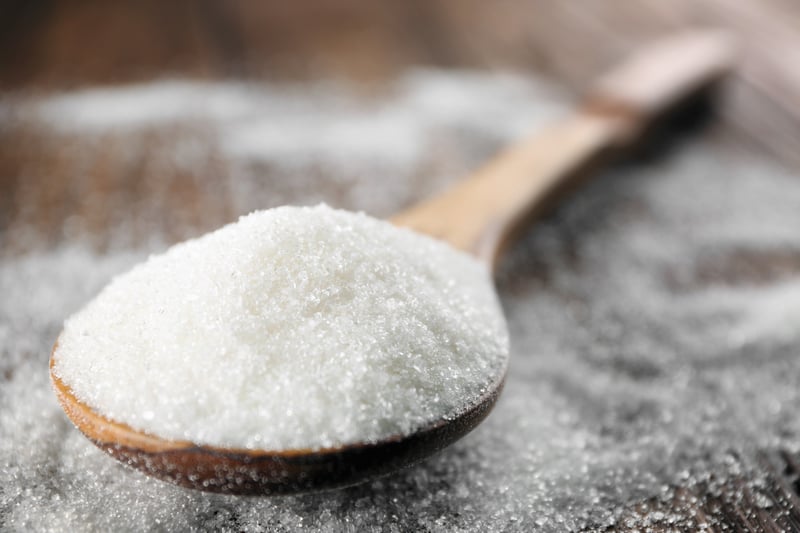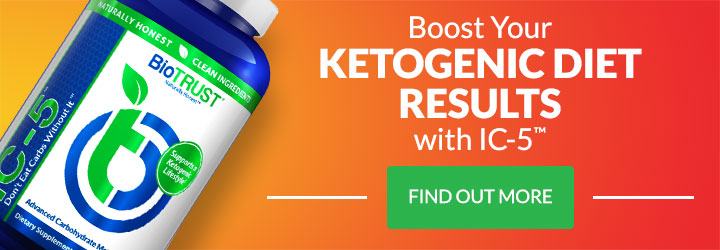Here are 14 Signs You’re Eating Too Much Sugar

It’s hard to imagine now, but depending on where they lived, our hunter-gatherer ancestors likely ate sugar for only a few short months out of the year. They simply had access only when fruit was in season. Of course, if they were able to keep birds and other critters away long enough to pick a little extra of the sweet stuff to dry and store, they might have a stash for later in the year (think grapes/raisins, apricots, figs, cranberries, apples, etc.).
But the crystalized white stuff that is ubiquitous in everything from ketchup to canned soup to candies and virtually everything in between is pretty new. And because it’s so abundant now, there are numerous warnings that almost all of us are probably eating too much sugar—way too much sugar.
Anyone who knows me knows I can’t say no to a homemade cookie—especially when they come from my mom’s kitchen. So, to be honest, I’d rather keep my head in the sand and forget to count sugar calories. If you feel the same way, I apologize.
But there is good reason to understand what sugar does to your body, how to determine if you’re eating too much sugar, and alternatives to help tame the savage sweet tooth while cutting back.
In other words, my friend, whether your nemesis is candy, pastries, cereal, sodas, spaghetti sauce, or cookies (like me), we’re all in this together.
Let’s brush off those crumbs and dive right in…
Added Sugar vs Natural Sugar
First, I need to clarify what I mean by sugar. Throughout this article, when you see “sugar,” I’m talking about added sugars (which is usually highly refined)—not the sugar that is a natural component of fruits like bananas, oranges, apples, and berries, vegetables like carrots, sweet/bell peppers, winter squash/sweet potatoes, beets, or tomatoes, or even the naturally-occurring sugar (lactose) found in milk and dairy products.
Rather, the foods that are typically loaded with added sugars include:
- Sodas
- Energy Drinks
- Sports Drinks
- Chocolate Milk
- Flavored Coffees
- Iced Tea
- Vitamin-enhanced Water
- Candies
- Chocolate
- Fruit Drinks and Punch
- Cakes
- Pizza
- Baked Beans
- Canned or Pre-made Soup
- Cereal (including Granola) and Cereal Bars
- Peanut Butter (and other Nut Butters)
- Protein Bars
- Bottled Smoothies
- And many more…
What’s also surprising (and a bit scary) is the wide variety of vehicles by which sugar can be added to a food. In other words, you may be eating more than you know because they’re hidden in plain sight on labels as:
- Sugar
- Agave nectar/syrup
- Sucrose
- High-fructose corn syrup (HFCS)
- Corn syrup
- Corn syrup solids
- Beet sugar
- Molasses
- Brown sugar
- Cane juice crystals
- Caramel
- Carob syrup
- Coconut sugar
- Powdered sugar
- Date sugar
- Evaporated cane juice
- Florida crystals
- Brown rice syrup
- Dextrose
- Glucose
- Maltodextrin
- Maltose
- And many more…
For what it’s worth, new FDA guidelines are requiring manufacturers to list “Added Sugars” as part of the information provided on the Nutrition Facts Panel. So, if the long list of pseudonyms above is a bit overwhelming, just check the label to see how much sugar has been added (per serving).
How Much Sugar is Too Much Sugar?
In the U.S., it’s estimated that folks consume, on average, 17 teaspoons (or just over 71 grams) of added sugar daily, 1 which adds up to nearly 57 pounds of added sugar per year. This is far and above the American Heart Association recommendation of no more than 6 teaspoons (25 grams) daily for women or 9 teaspoons (38 grams) for men 2 or the World Health Organizations (WHO) recommendation of no more than 10% of daily calories (ideally less than 5%). 3
Of course, it’s easy to see how we overconsume added sugar. For example, one 12-ounce soda can contain 46 grams of sugar. Even if you aren’t a soda drinker, looking at the list of common foods with sugar, you can see how fast your consumption can accumulate in a single day with a serving of yogurt for breakfast (up to 29 grams), a serving of spaghetti squash topped with marina sauce for lunch (up to 12 grams), and perhaps a prepared soup for dinner (up to 20 grams in classic tomato soup). That’s nearly double the recommended sugar intake, and many people consider those types of foods to be fairly healthy…
What Sugar Does to the Body
One of the biggest issues with sugar is that it is very calorie-dense yet provides no nutritional value to speak on—that’s the definition of empty calories. And many of those empty calories come in liquid forms (e.g., sodas, sweetened drinks, and sugary fruit cocktails), which rush through the digestive system and right into the bloodstream, causing a dramatic spike in blood sugar, typically followed by a substantial release of insulin, and ultimately, succeeded by a drop in blood sugar.
In addition, consuming sugar, especially fructose, can both increase hunger 4 and increase the resistance to leptin, 5 the hormone that tells our bodies it’s time to stop eating. So, we’re more likely to keep eating more calories we often don’t need.
Not surprisingly, too much sugar consumption has been linked to obesity, diabetes, and other chronic diseases. And when those calories come in the form of sweet beverages, they’re more likely to lead to increased visceral fat—which surrounds the organs and is often called “belly fat”—and excess belly fat is associated with heart disease, reduced insulin sensitivity, increased metabolic risk, as well as diabetes. 6
There’s also evidence that a high-sugar diet is pro-inflammatory and increases blood triglycerides, blood sugar, and blood pressure, which can lead to atherosclerosis. 7
Unfortunately, that’s not all. Consuming too much sugar has also been linked to:
- Acne 8
- Aging skin (e.g., wrinkles) 9
- Cellular aging 10
- Brain fog
- Dehydration
- Increased risk of dementia
- Blood sugar swings
- Diabetes 11
- Decreased energy 12
- Depression 13
- Cavities and tooth demineralization 14
- Fatty liver 15
- Increased risk of kidney disease 16
- Increased risk of cancer 17
- Increased risk of gout 18
14 Signs You’re Eating Too Much Sugar
Now that you know how eating too much sugar can negatively affect your body, how do you know when you’ve had too much? Sure, you could count every single gram. You can also watch your body for signs that let you know when you’ve reached your threshold.
Here are 14 signs that you may be eating too much sugar:
- You’re constantly hungry.
- You crave sweet foods.
- You’re often tired—even after a good night’s sleep—and feel sluggish throughout the day. Similarly, you may notice that your energy levels swing up and down throughout the day (and you often seek sugary foods to help with the “up”).
- You pee a lot.
- You’re often thirsty and experience dry mouth.
- Your skin is dry, or you keep breaking out.
- You experience brain fog, especially after eating.
- You find yourself more irritable and anxious.
- You’ve been packing on some extra pounds.
- You’ve stopped getting stellar reports from the dentist.
- Foods that used to taste sweet don’t taste as sweet.
- Your muscles ache and joints are stiff.
- You catch colds/flu more often.
- You feel bloated or gassy.
Simple Ways to Cut Down on Too Much Sugar
While some suggest completely avoiding added sugar all the time, I don’t believe in dietary dogma and have found that too much restriction can lead to deprivation, which then drives folks into making poor food decisions—like hiding food consumption or bingeing—and subsequent negative self-talk (i.e., beating yourself up).
So, on those occasions when your mom (or daughter or granddaughter) does make your favorite cookies (or whatever your favorite homemade treat), instead of eating it and feeling bad (or hiding in the bathroom and eating the entire batch in secret), take time to really enjoy a piece. Let them know how much you appreciate their gift. You can always give away or freeze the rest (if you are the type that can forget about them until it’s time to enjoy another one).
If you have a sweet tooth, you can prepare delicious low-sugar desserts instead. Better yet, get your family involved so you enjoy time together and that becomes the highlight, rather than the food itself.
Here are some more tips to help cut back if you think you’re eating too much sugar:
- Ditch the sodas, fruit juices, sweet teas, etc., and replace them with plain water, fruit-infused water, or unsweetened sparking water.
- Tempt your taste buds with fresh fruits, especially low-sugar berries, which (besides being delicious and satisfying on their own) can be added to protein-rich smoothies, mixed into plain yogurt, and even added to salads and salad dressings.
- Use a natural, calorie-free sweetener like stevia, erythritol, xylitol (be careful to keep this away from your pets as it is highly toxic for dogs), monk fruit, or yacon syrup. Start with small amounts as these may cause digestive issues for some.
- Watch out for artificial sweeteners, however, as they come with a whole ‘nother set of issues.
- Check labels and avoid marinades, ketchups, and sauces with added sugars.
- Swap out your cereal or granola for plain oatmeal topped with berries.
- Replace jams with fresh fruit like bananas or berries.
- Focus on eating whole, minimally processed foods prepared at home rather than pre-packaged and prepared foods that are heavily processed and often laden with additives.
- If you are eating sweets, eat them right around exercise to either help energize your workout (before) or usher nutrients into your muscles (after). That doesn’t mean to eat as much sugar as you can, but rather, take advantage of the fuel they offer. (Calories still count even if you’re working out hard.)
Sugar isn’t something that’s inherently evil that must be avoided at all costs. In fact, fresh fruits are decidedly part of a healthy diet. Yet it does a body good to limit the consumption of added sugars to support healthy blood sugar levels, and instead, save those calories for foods that both fill you up and make you feel great. Here’s to finding the balance, so we can have our cake (or cookies) and eat it too.







